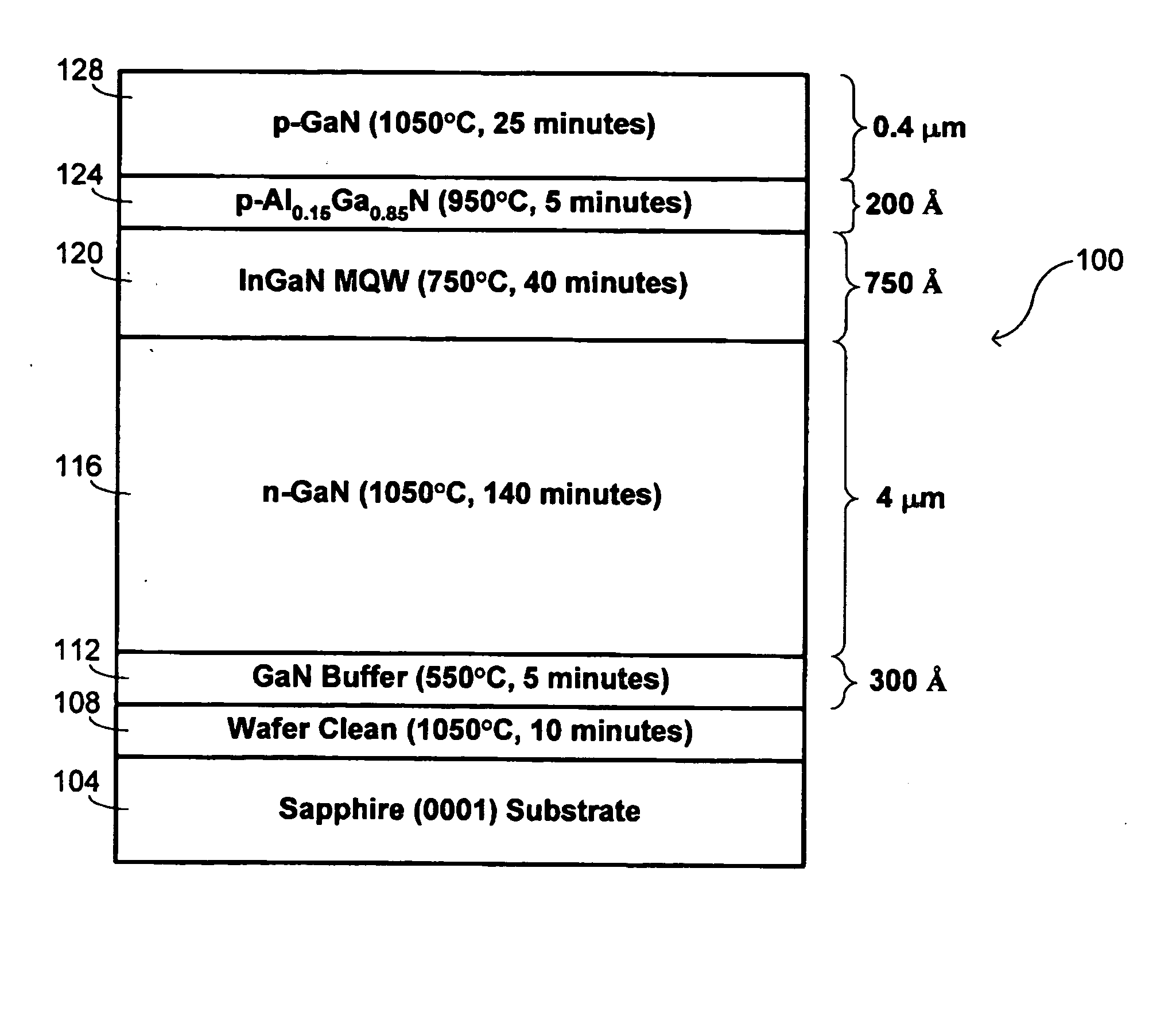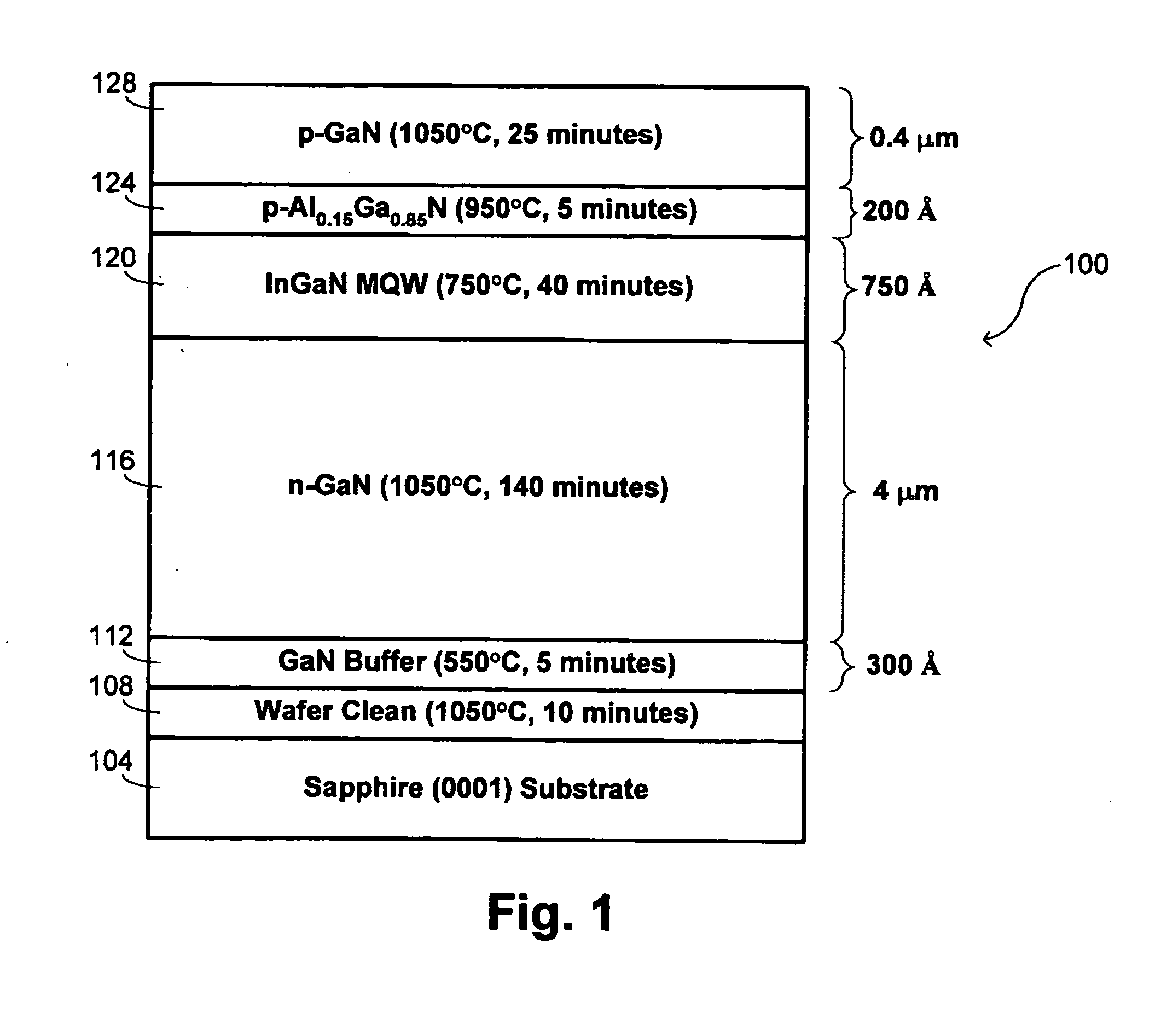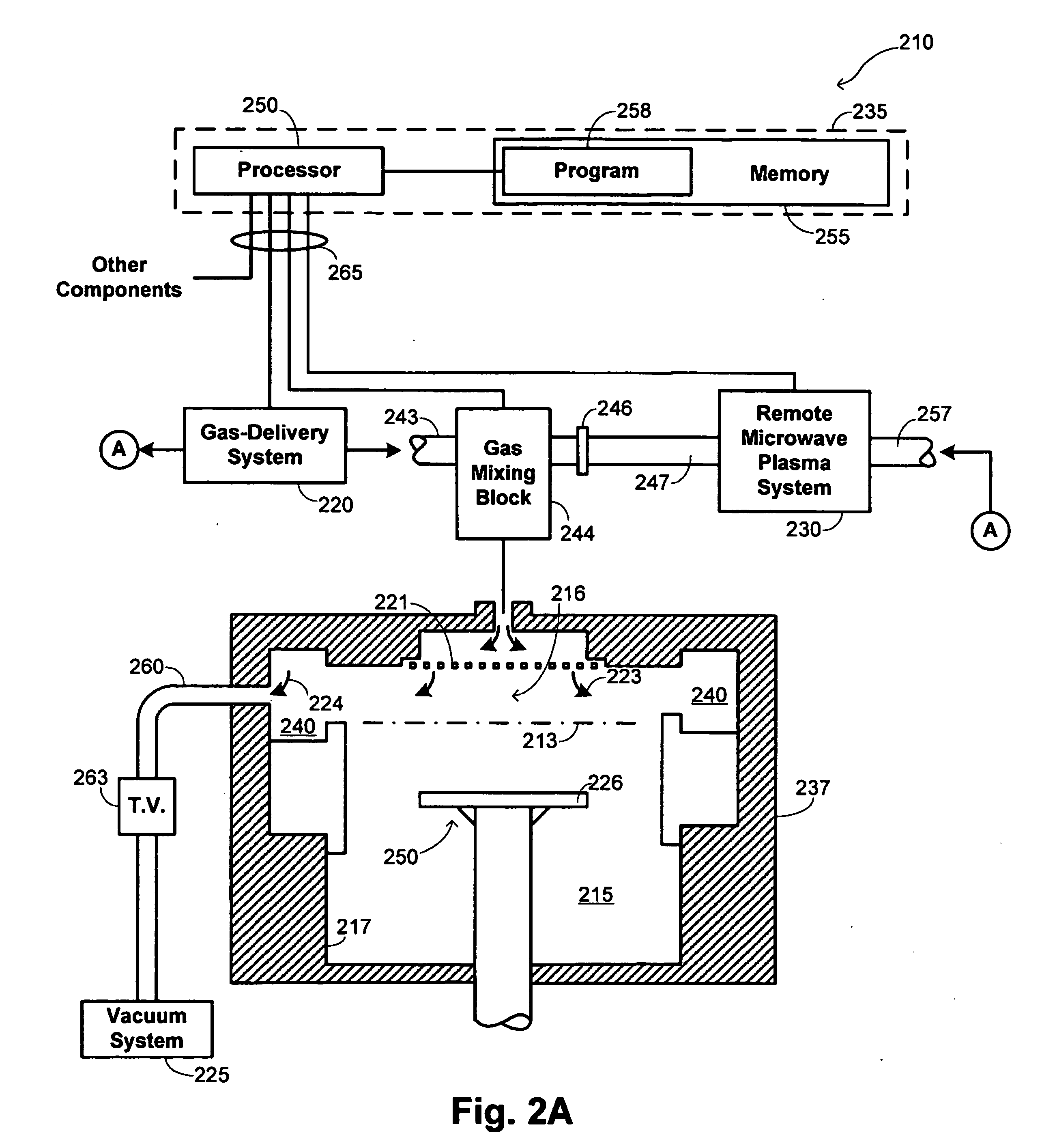Epitaxial growth of compound nitride semiconductor structures
a compound nitride and semiconductor technology, applied in the direction of polycrystalline material growth, instruments, under a protective fluid, etc., can solve the problems of poor luminescence of devices, impede the practical fabrication of such devices, and difficulty in efficient p-doping of such materials, so as to enhance the uniformity of deposited materials and accelerate growth
- Summary
- Abstract
- Description
- Claims
- Application Information
AI Technical Summary
Benefits of technology
Problems solved by technology
Method used
Image
Examples
Embodiment Construction
1. Overview
[0018] In conventional manufacturing of compound nitride semiconductor structures, multiple epitaxial deposition steps are performed in a single process reactor, with the substrate not leaving the reactor until all of the steps have been completed. The illustration in FIG. 1 shows both the types of structures that may be formed and the sequence of steps used in fabricating such a structure. In this instance, the structure is a Ga—N-based LED structure 100. It is fabricated over a sapphire (0001) substrate 104, which is subjected to a wafer cleaning procedure 108. A suitable clean time is 10 minutes at 1050° C., which may be accompanied by additional time on the order of 10 minutes for heat-up and cool-down.
[0019] A GaN buffer layer 112 is deposited over the cleaned substrate 104 using a metalorganic chemical-vapor-deposition (“MOCVD”) process. This may be accomplished by providing flows of Ga and N precursors to the reactor and using thermal processes to achieve deposit...
PUM
 Login to View More
Login to View More Abstract
Description
Claims
Application Information
 Login to View More
Login to View More - R&D
- Intellectual Property
- Life Sciences
- Materials
- Tech Scout
- Unparalleled Data Quality
- Higher Quality Content
- 60% Fewer Hallucinations
Browse by: Latest US Patents, China's latest patents, Technical Efficacy Thesaurus, Application Domain, Technology Topic, Popular Technical Reports.
© 2025 PatSnap. All rights reserved.Legal|Privacy policy|Modern Slavery Act Transparency Statement|Sitemap|About US| Contact US: help@patsnap.com



